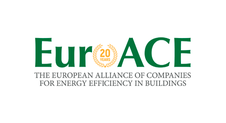Search eceee proceedings
When energy efficiency refurbishment projects foster sustainability: a higher education institution case study
Panel: 8. Buildings: technologies and systems beyond energy efficiency
Authors:
Marta Lopes, IPC-ESAC INESC Coimbra, Portugal
Rui Amaro, IPC-ESAC, Portugal
Abstract
The new revised Energy Performance of Buildings Directive, which entered into force as of July 2018, brought new goals, which are mostly associated with national energy performance requirements, long-term renovation strategies, health and well-being of building users, incorporation of smart technologies and e-mobility. Although buildings’ energy efficiency (EE) has improved over the years, further developments are still possible. Currently, in the EU, buildings still account for 40% of energy consumption and 36% of CO2 emissions.
Higher education institutions play a key role in the promotion of sustainability and the dissemination of EE practice due to their educational responsibility. Yet, they face specific challenges due to their characteristics (e.g., organisational complexity of the public sector, resistance to change, old and historical buildings). In this work a case study in a public higher education institution is presented. The challenges emerging during the planning, implementation, monitoring, verification and evaluation stages are discussed. Effective energy savings and environmental impacts are quantified.
The Portuguese Government has recently put in place refurbishment policies in buildings to promote EE, such has the Operational Plan for the Sustainability and Efficient Use of Resources (poseur.portugal2020.pt/en/). This policy finances EE interventions in existing public buildings through a 95% refundable financing scheme supported by energy savings. In this context, the Agriculture College of the Polytechnic Institute of Coimbra has designed and implemented an integrated EE project comprising the deployment of thermal insulation in the roofs, double glazed windows, automated LED lighting, solar panels for water heating and a biomass boiler for central heating.
Although technical EE solutions in buildings are nowadays standard, the complexity of implementing them in the public sector mostly relies on organisational challenges: The motivation of the leadership: in this case study, it comprised not only monetary and energy savings and the improvement of thermal comfort and well-being of building users, but also the opportunity for rehabilitating the building and the positive educational impacts on the students and the community. These positive impacts were widely recognised ex-post; The shared organisational decision process involving the institution’s leadership at different hierarchy levels;
The capability to comply with technical requirements of EE technologies and, at the same time, with public tender process technicalities and bureaucracy, which required skilled and energetic human resources to facilitate the process and execute the project in due time; The organisational, technical and financial ability to cope with unforeseen and needed complementary actions; The active involvement of the community and a thorough planning, as the EE actions were implemented with all activities running as usual (including classes); The close interaction with the financing agency management as the project progressed, which enabled to test and refine formal procedures.
With a total investment of 360 k€, energy savings were initially estimated using building modelling as 30% (326 MWh/year), but as the project is being formally concluded, preliminary results show that effective savings only reach 17% of final energy consumption (123 MWh/year), avoiding the emission of 108 tCO2/year and changing the building energy performance status to the B class. This venture has also encouraged the institution to implement other sustainability projects such as the deployment of energy management systems, new five EE refurbishment projects and e-mobility investments and is currently used as a case study in classes.
Acknowledgement: This work was partially supported by project grants POSEUR-03-2016-65, UID/Multi/00308/2019, ESGRIDS (POCI-01-0145-FEDER-016434), Learn2Behave (SAICT-POL/23651/2016) and MAnAGER (POCI-01-0145-FEDER-028040).
Downloads
Download display as pdf: 8-158-19_Lopes_display.pdf
Panels of
1. The dynamics of limiting (energy) consumption
2. What's next in energy policy?
4. Monitoring and evaluation for greater impact
5. Smart and sustainable communities
7. Make buildings policies great again
8. Buildings: technologies and systems beyond energy efficiency
9. Improving energy efficiency in ICT, appliances and products

























